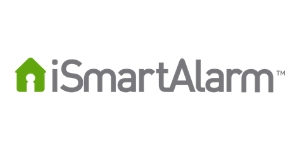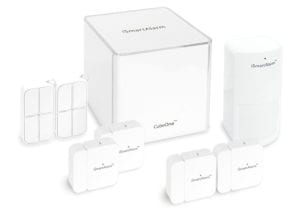iSmartAlarm is one of our favorite picks for DIY home security. The system provides affordable entry options and free cloud storage but limited home automation. The packages are divided between home sizes: studio, two-bedroom, and so on. While the system isn’t perfect for everyone, it is a solid choice for some people—like me!—who live in a small apartment. Maybe you have a vacation home or a hunting lodge that you only occupy part of the time and want to keep an eye on. In those cases, self-monitoring can work. Here’s our full review of how well iSmartAlarm fits the bill.
iSmartAlarm DIY Home Security Review
For over 11 years, SafeWise experts have conducted independent research and testing to write unbiased, human reviews (not robots). Learn more.
iSmartAlarm has gone out of business. Although we've continued to see some iSmartAlarm packages sold on Amazon, we don't recommend buying them because you won't get any customer support if things go wrong.
Check out all of the other options at your fingertips in our review of the best DIY security systems.
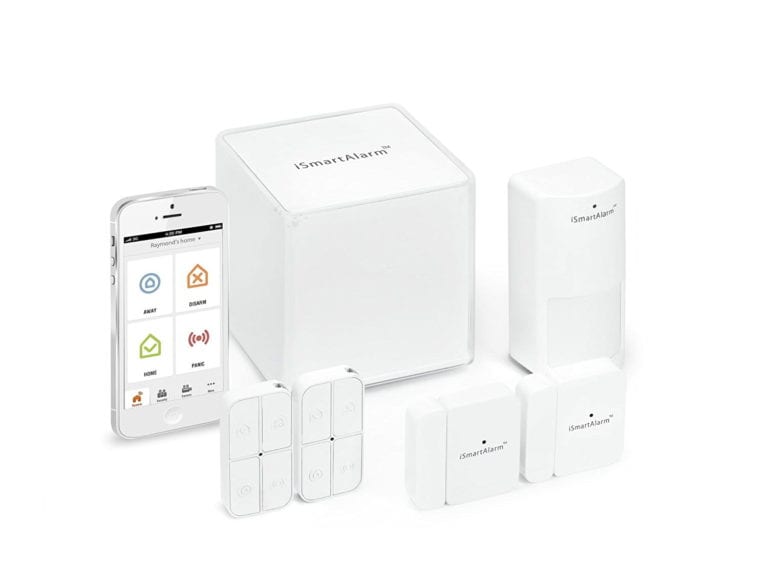
Security Packages
iSmartAlarm offers six packages, three of which are “exclusive” packages. For more information on what the equipment means for you, read our “iSmartAlarm equipment” section after our “packages” section.
Compare iSmartAlarm Packages
Pan & Tilt Smart Home Video Bundle
Although some other packages include more sensors, the Smart Home Video Bundle would be our number one package recommendation for a simple reason: it’s the only one that includes a camera. The package includes three contact sensors, one motion sensor, and one remote tag, so if you live in a larger home you’ll need to add additional accessories.
Preferred Package
Frankly, the Preferred Package isn’t the greatest value. Although it comes with an extra remote tag, it has fewer contact sensors than the Plus Package, which is priced just cents more.
Deluxe Package
The Deluxe Package is a tiny bit more expensive than the Preferred Package, but it includes enough sensors to protect a one-bedroom apartment. Any apartment larger than a one-bedroom would likely need more motion sensors (and a more expensive package). But we’d recommend looking at the Plus Package.
Plus Package
The Plus Package offers more contact sensors for about the same price as the Deluxe Package. If you break it down, the Plus Package is the same as the Smart Home Video Package minus the camera. If you added an additional camera to the Plus Package, it would be the exact same price.
Guard Package
The Guard Package is the first of iSmartAlarm’s “exclusive” packages. These packages have more sensors included in them, which would better for larger households. The Guard Package is designed to fit most one- or two-bedroom homes, and it is likely the best value for serious home security. To round it out and make this package truly worthwhile, we suggest adding a camera.
Protect Package
The Protect Package is designed for two- to three-bedroom homes. With six contact sensors and five motion sensors, it can cover multiple angles and entryways. The downsides are that the package is much more expensive than most of the other packages and it doesn’t include a camera.
Shield Package
The Shield Package is the final option from iSmartAlarm, and it’s by far the most expensive. Although it includes a huge number of sensors, it lacks a camera—and honestly, for this price range, you’re better off paying for a proper security system with professional monitoring.
iSmartAlarm equipment
The company doesn’t offer a huge range of equipment, but the pieces it offers are inexpensive and easily expandable.
CubeOne
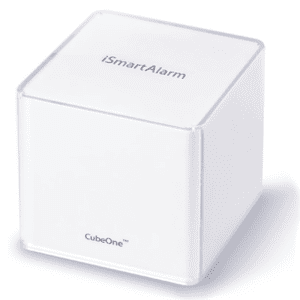
The CubeOne hub is the “brain” of the entire iSmartAlarm system. This hub supports up to 70 connected devices at any given time and has a 110dB siren built in. This piece of equipment cannot be purchased on its own (nor would it make sense to do so). It works with your other iSmartAlarm equipment.
Window & Door Sensors
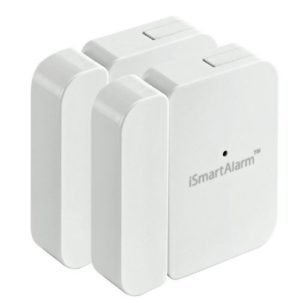
The contact sensors sell in two-packs for a great deal on Amazon. These are placed on anything that opens—doors, windows, cabinets, etc. When the two sections of the sensor separate, the sensor signals the CubeOne hub and you receive an alert on your smartphone. These are great for monitoring specific areas, like the knife drawer in the kitchen or your liquor cabinet
Motion Sensors
Motion sensors have a 30-foot PIR range. These are battery-powered and totally wireless, and you can move them easily throughout the home to wherever you’d like. The sensors attach to the wall with double-sided adhesive, so installation and setup are quick. The angle of the sensor is also adjustable.
Remote Tags
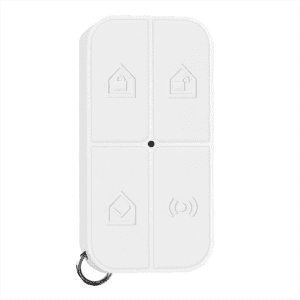
Remote tags let you control your system at home, without using your smartphone. The remote has four buttons: one to arm the alarm, one to disarm the alarm, one to trigger the siren, and one to silence the siren. You could use these for visitors in your home to give them access to the system.
Spot Camera
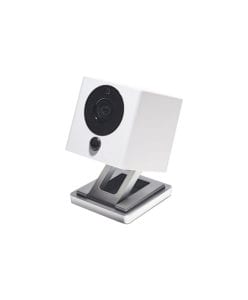
The Spot Camera is the basic camera offering from iSmartAlarm. The camera includes features like two-way audio, smoke and carbon monoxide detection, and motion detection. You also receive up to 14 days of free cloud recordings and up to 32GB of local storage. You can connect up to 10 Spot cameras to a CubeOne hub, but unlike the other devices offered by iSmartAlarm, the Spot can work completely on its own—no hub required.
iCamera Keep
The iCamera Keep is the most powerful camera the iSmartAlarm offers, and it’s also on the more expensive side. The iCamera Keep has 720p resolution, night vision, the ability to pan and tilt, and up to 4x digital zoom. Like the Spot, up to 10 cameras can be connected to the CubeOne, but it also works as a completely standalone device.
iSmartAlarm has other equipment like the Satellite Siren, an additional siren that you can connect to the CubeOne. You can also purchase the Smart Switch, which allows you to remotely control any device plugged into the switch, such as a lamp or a coffee maker.
Installing the System
iSmartAlarm is one of the simplest systems to install. Most sensors are applied using double-sided adhesive. Since most of the sensors are wireless, you don’t have to drill holes for cable management. You can simply plug and play.
The system includes instructions on how to get started. In addition, you can download the Quick Installation Guide from the company’s website. It really is only three steps. Most of the sensors are connected to the CubeOne through the mobile app: scan the QR codes and follow the on-screen instructions to get started.
iSmartAlarm: Smart or Not?
The iSmartAlarm system could be great in certain scenarios. I live in a secured apartment building on an upper floor, so I don’t need to monitor my windows, but I appreciate that the Spot camera works as a standalone so I can monitor maintenance and pest control when I’m away from home. However, if I wanted a larger or more robust security system, I’d be more inclined to find something with professional monitoring and more smart home features.
If something goes wrong, all the push notifications in the world won’t notify the police for you—and if you’re away from your phone, all you’ll have is a little evidence after the theft has happened. iSmartAlarm is a great choice for limited situations but not for whole-home security. Think about how many valuables you have in your home and decide if you want to take on the responsibility for those yourself. If you decide a more comprehensive security system might be needed, take a look at our list of the top home security systems.
Related pages
Recent Articles




